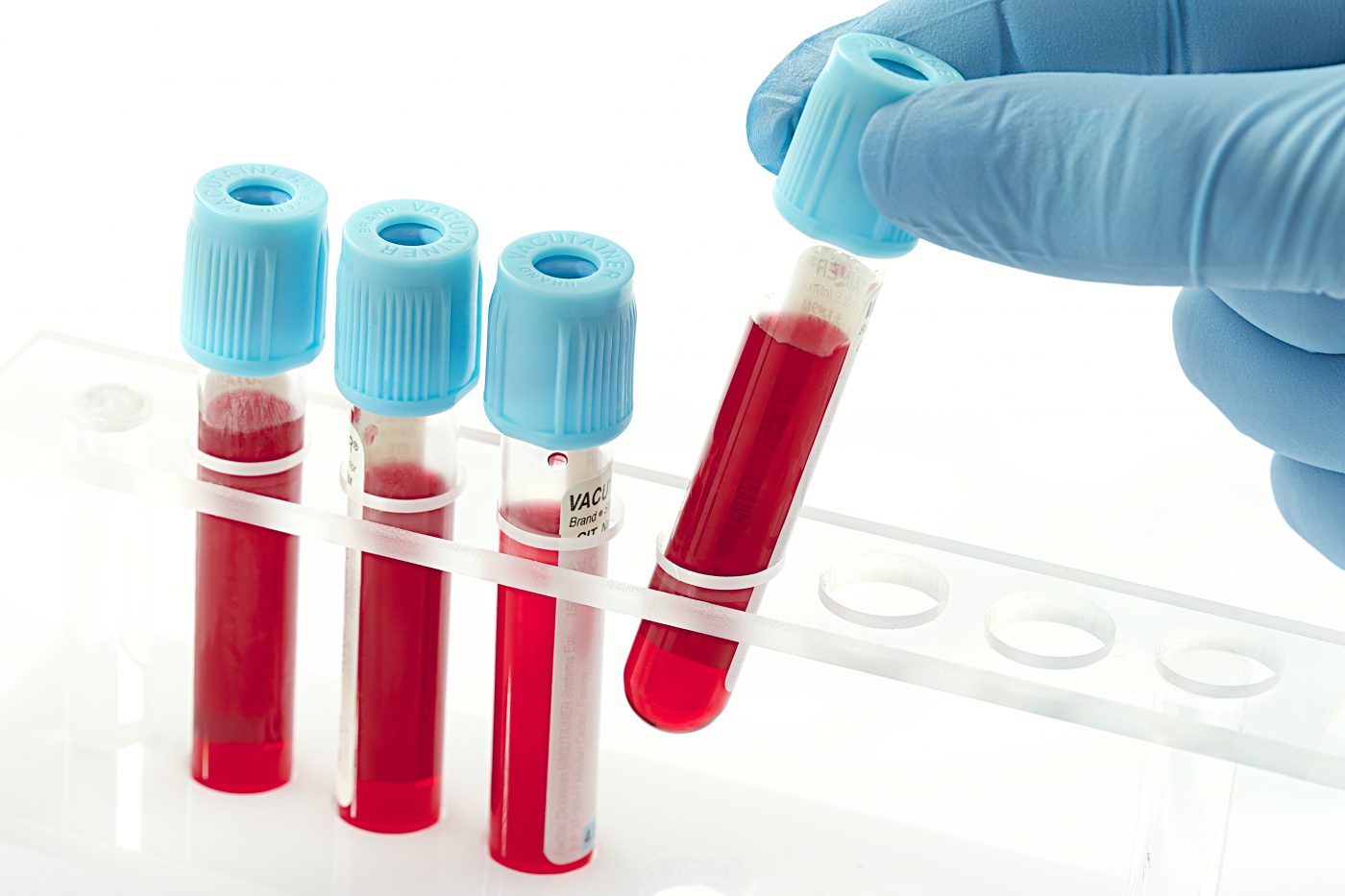Blood Levels of Antioxidant Protein May Serve as IPF Biomarker
Written by |

Shutterstock
Low blood levels of haptoglobin-related protein (HRP), a protein with antioxidant properties, may serve as a biomarker of idiopathic pulmonary fibrosis (IPF), according to a recent study.
The data also highlighted that IPF patients show significant changes in the levels of proteins involved in inflammatory and immune responses, as well as fat metabolism, and oxidative stress. (Oxidative stress is an imbalance between the production of potentially damaging molecules called free radicals, and the ability of cells to detoxify them with antioxidants.)
Future and larger studies are needed to confirm HRP’s potential not only as a detection biomarker — to help in, but not establish, an IPF diagnosis — but also as a biomarker to monitor disease progression and treatment response.
The study, “Label-free plasma proteomics identifies haptoglobin-related protein as candidate marker of idiopathic pulmonary fibrosis and dysregulation of complement and oxidative pathways,” was published in the journal Nature: Scientific Reports.
IPF is characterized by chronic inflammation and progressive scarring (fibrosis) of tissue within the lungs. Its underlying molecular mechanisms remain poorly understood, and there is a high unmet need for suitable, minimally invasive, markers to detect and monitor this disease.
Such biomarkers would not only help to diagnose IPF and initiate therapy earlier — both key to slowing disease progression — but also help to assess treatment responses.
Furthermore, the “identification of dysregulated systemic pathways will also help further the understanding of the disease and provide avenues for further research into diagnosis and treatment,” the researchers wrote.
A team of researchers at the Faculty of Medicine, University of Helsinki, in Finland, set out to identify suitable predictive blood biomarkers of IPF by comparing the blood levels of proteins between patients and healthy individuals.
The study included blood samples from 17 people diagnosed with IPF (14 men and three women; median age of 71) and 19 healthy individuals (14 men and five women; median age of 73), which were used as controls. Patients’ samples came from the Finnish IPF registry, while blood samples from healthy donors were obtained from the Helsinki Biobank.
Of a total of 166 proteins detected in the participants’ blood, 66 were at significantly different levels between IPF patients and controls. Levels of most of these 66 proteins were significantly lower in patients compared with healthy individuals, with only 10 showing significantly higher levels.
Notably, 24 of these proteins were also identified as significantly different between the two groups using a different statistical method. To identify strong IPF biomarkers among these 24 proteins, the team limited the search to those showing at least a twofold change between patient and control levels.
With this additional filter, only one protein, called HPR, remained significantly different between the two groups, with IPF patients showing HPR levels that were 2.2 times lower than healthy individuals.
HPR works by binding to free hemoglobin in the blood — the iron-containing protein within red blood cells that allows oxygen transportation — preventing its toxic effects, including oxidative stress-associated damage.
“HPR as a biomarker makes biological sense in IPF patients as oxidative stress related injury has been proposed as one of the mechanisms contributing to IPF progression,” the researchers wrote, adding that Esbriet (pirfenidone) — an approved IPF therapy marketed by Genentech — is also thought to work by regulating antioxidant functions and lowering oxidative stress in the lungs.
Looking at results from either statistical method and from pathway and network analysis, the team also found that most proteins differing between the two groups were involved in the acute phase response, complement system, coagulation pathways, fat metabolism, and oxidative stress.
Of note, acute phase response is an early defense system activated partly in response to inflammation, infection, and tissue injury, while the complement system is a major part of the immune system’s first line of defense.
Based on current and previous findings, the team hypothesized that complement activation and poorer antioxidant function in IPF patients may lead red blood cells to burst, increasing the levels of free hemoglobin. This, in turn, may cause oxidative damage, inflammation, and eventual fibrosis.
“Our pilot study points towards aberrations in complement activation and oxidative damage in IPF patients and provides haptoglobin-related protein as a new candidate biomarker of IPF,” the researchers wrote.
They noted, however, that larger international studies are needed to further validate HPR’s value as biomarker to detect and monitor IPF.






